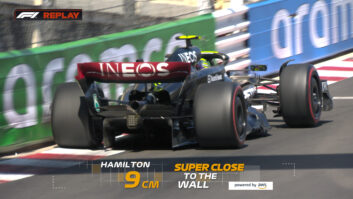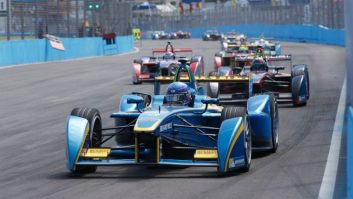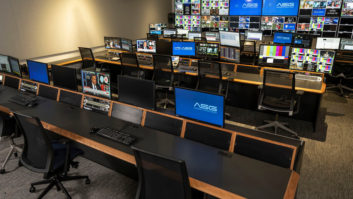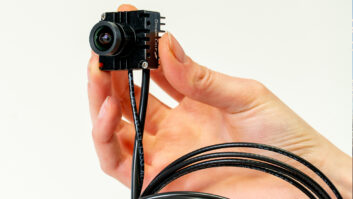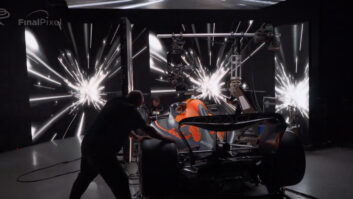The first ever race in the new battery-powered Formula E took place in Beijing yesterday. As these are the greenest ever racing cars, the broadcast facilities also had to be lighter, leaner and use less power, which posed challenges for Leeds-based systems integrator FAL Systems, which was commissioned to build the system by Hayfisher Productions, with Formula E as host broadcaster, in collaboration with Aurora Media.
The seven pods designed for inter-modal transport had to be small and light – and because rail is very bad for high-frequency vibration, everything has had to be shock-mounted.
The systems centre around a customised Grass Valley NV8280 hybrid router, which includes audio embedding/de-embedding and all video routing, “to save space, weight and cost,” explained Andy Unsworth, FAL technical director. It also chose Grass Valley multiviewers, “which integrated with the router and control system and gave us a really simple solution.”
It has 13 Grass Valley LDK-80 Flex cameras, run over SMPTE fibre, 18-input/3-output K2 Dyno servers, and a Karrera vision mixer, and the merger of Miranda and Grass Valley has meant that the Karrera could be integrated with the router control system, “to give a very powerful, but simple to operate, system.” Belden, which owns Grass Valley, also supplied all of the fibre cable for the installation and cameras, which amounted to 70 300m drums.
“The support is very good as well,” added Chris Warden, MD. Grass Valley sent two technicians to support the event in Beijing, and to the two pre-race simulations in the UK.
There are also up to four in-car cameras in each of the 20 cars, with 40 in place for the first race and 80 in use eventually, but just four feeds to the mixing desk. Vislink is supplying both in-car cameras and links, taking a single channel from each car, with data and telemetry information (with remote switching between the cameras), using a diversity fibre-based receive system.
There will also be four of the new Marshall miniature cameras used locked off, plus two RF (Panasonic P2) camcorders for pit reporters and ENG use, again using Vislink systems, which can have up to 12 receive points.
